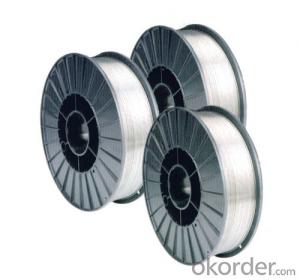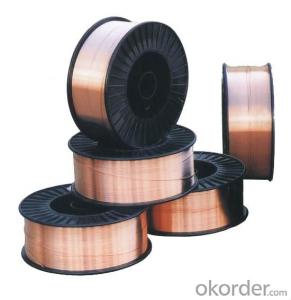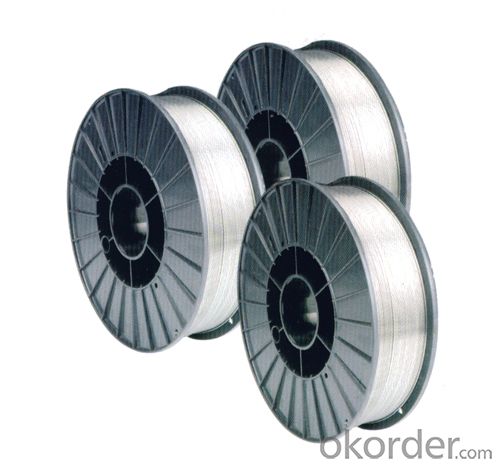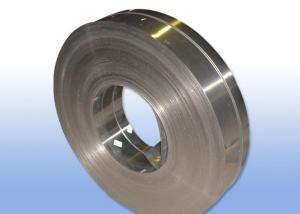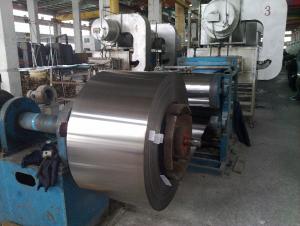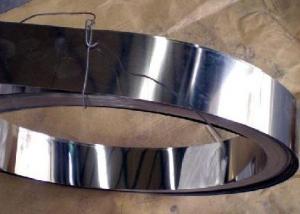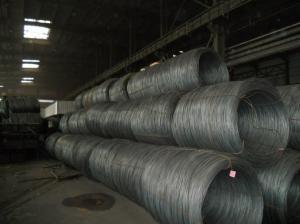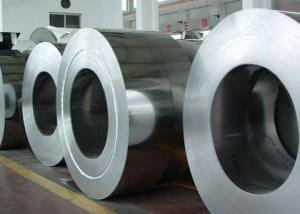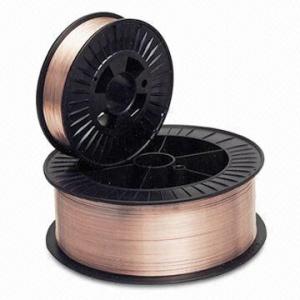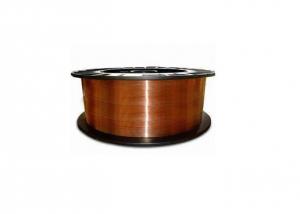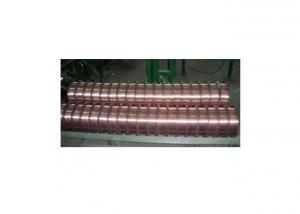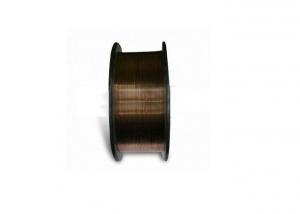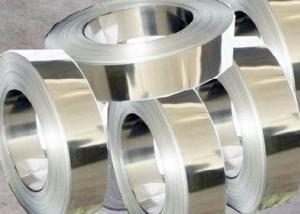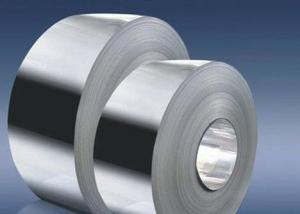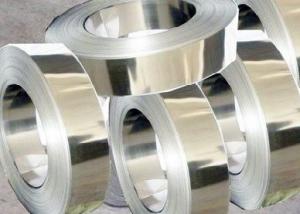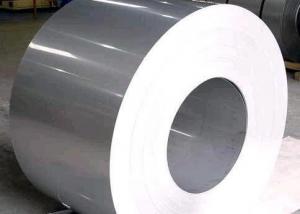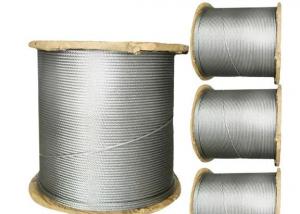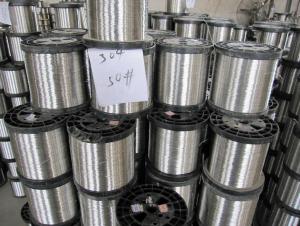AWS a5.18 er70s-6 co2 Gas Shileld Welding Wire
- Loading Port:
- Qingdao
- Payment Terms:
- TT or LC
- Min Order Qty:
- 10 m.t.
- Supply Capability:
- 1000 m.t./month
OKorder Service Pledge
OKorder Financial Service
You Might Also Like
AWS a5.18 er70s-6 co2 Gas Shileld Welding Wire
Main Structure:
aws a5.18 er70s-6 co2 welding wire
-Factory supply
-OEM packing
-0.8-1.6mm
-Spool drum pack, 10 days deliver
aws a5.18 er70s-6 co2 welding wire fil à souder
1. Brief Introduction:
aws a5.18 er70s-6 co2 welding wire fil à souder has excellent mechanical performance such as depositing speed and high efficiency, stable arc, little splash, good welding seam.
This series of welding wires are suitable for the low carbon steel and low alloy structure, vehicle, bridge, container, construction machinery, boilers and construction etc.have depositing speed and high efficiency, stable arc, little splash, good welding seam.
2. Advantages:
1. very low welding cost, high productivity and low electricity consumption.
2. excellent welding performance, stable arc, low spatter, easy slag removal.
3. perfect welding seam forming, small weld metal stomatal sensitivity.
4. easy operating, all position welding.
5. very low hydrogen content in the weld and lower nitrogen content, excellent crack-resistance.
6. little deformation after welding.
7. wide applicability. suitable for welding thin, medium and thick plates.
8. Suitably wide range of welding current.
3. Usage:
ER70S-6 Welding Wire for Low Carbon Steel Weld has been widely used in all kind of field. such as automotive industries, construction machinery production, shipbuilding, metallurgical equipment production, bridges, civil works, petrochemical industry, pressure vessels of boiler, locomotives, etc.
4. Size:
Wire Size | Spool Size | Package Size |
0.8mm 1.0mm | D100mm D200mm D300mm K300mm | 1kg 5kg 15kg 20kg 250kg 350kg |
5. Chemical Composition:
C | Mn | Si | S | P | Cu | Other | |
standard value | 0.06-0.15 | 1.40-1.85 | 0.80-1.15 | ≤0.035 | ≤ 0.025 | ≤ 0.50 | ≤ 0.50 |
sample value | 0.08 | 1.51 | 0.92 | 0.020 | 0.016 | 0.20 | 0.02 |
6. Typical Mechanical Properties of Deposited Metal:
Tenile strength δb (MPa) | Yield Point δ0.2(MPa) | Elongation δ5 (%) | AKV Impact Value (J) (-20°C) | Shielding Gas |
≥ 500 | ≥ 420 | ≥ 22 | ≥ 27 | 100%CO2 |
560 | 500 | 27 | 102 | 100%CO2 |
7. Diameter of Wire & Reference Current (DC+):
Diameter of wire (mm) | Ø0.8 | Ø 1.0 | Ø 1.2 | Ø 1.6 |
F current (A) | 40-180 | 50-220 | 80-350 | 170-550 |
V current (A) | 40-140 | 50-160 | 50-180 | |
OH current (A) | 40-120 | 50-160 | 45-180 |
8. Package:
1kg/ 5kg/ 15kg/ 20kg plastic spool
15kg/ 20kg metal spool
250kg/350kg drum
9.Picture:
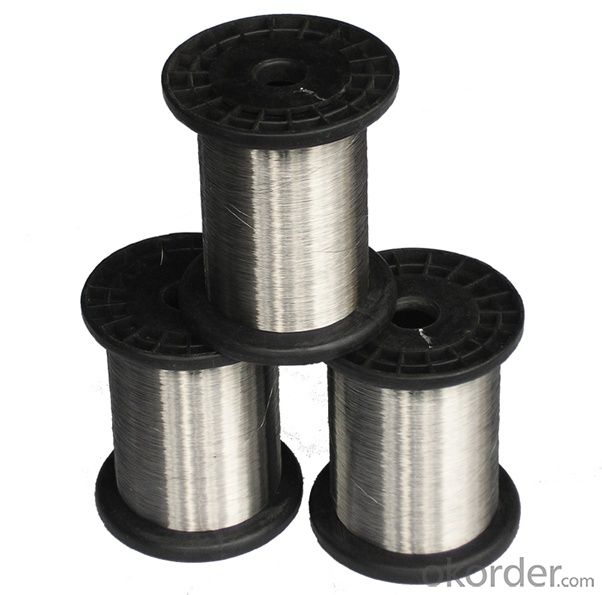

- Q: Is it necessary to make barbecue with argon arc welding wire (stainless steel)?
- Use argon arc welding wire (stainless steel) as barbecue rack, roasting meat is not harmful to human body.
- Q: Is stainless steel wire suitable for automotive brake cables?
- Automotive brake cables can indeed be made from stainless steel wire. Stainless steel is renowned for its exceptional resistance to corrosion, a quality that is vital considering the constant exposure of brake cables to moisture, road salt, and other substances that cause corrosion. Moreover, stainless steel wire possesses remarkable strength and durability, enabling the brake cables to endure the immense tension and stress they experience during braking. Furthermore, stainless steel wire has a sleek surface finish, which minimizes friction and guarantees the brake system operates smoothly and reliably. All in all, stainless steel wire is the favored choice for automotive brake cables due to its corrosion resistance, strength, and durability.
- Q: What are the different types of stainless steel wire brushes for cleaning?
- There are several types of stainless steel wire brushes used for cleaning, including twisted wire brushes, crimped wire brushes, knot wire brushes, cup brushes, and wheel brushes. Each type is designed for specific cleaning tasks and surfaces, such as removing rust, paint, or debris from various materials.
- Q: What are the different types of stainless steel wire rope available?
- There are several types of stainless steel wire rope available, including 1x19, 7x7, and 7x19 constructions. These different constructions refer to the number of strands and wires within the rope, with 1x19 having one strand composed of 19 wires, 7x7 having seven strands composed of seven wires, and 7x19 having seven strands composed of 19 wires. Each construction offers different levels of flexibility, strength, and resistance to corrosion, making them suitable for various applications.
- Q: Is stainless steel wire suitable for wire rope pulleys?
- Yes, stainless steel wire is suitable for wire rope pulleys. Stainless steel has high strength and corrosion resistance, making it an ideal choice for applications where durability and longevity are important, such as in wire rope pulleys that are frequently used or exposed to harsh environments.
- Q: Is stainless steel wire magnetic?
- Stainless steel wire is commonly acknowledged as non-magnetic. Despite its iron composition, it incorporates additional elements like chromium and nickel, which facilitate the formation of a safeguarding oxide layer on the steel's surface. This oxide layer is responsible for the corrosion-resistant characteristics of stainless steel. Nevertheless, the inclusion of these alloying elements diminishes the magnetic attributes of stainless steel, rendering it non-magnetic or only faintly magnetic.
- Q: Can stainless steel wire be used for springs in the transportation industry?
- Indeed, springs in the transportation industry can utilize stainless steel wire. With its exceptional durability and resistance to corrosion, stainless steel proves itself as a fitting material for a plethora of applications in transportation, including springs. Demonstrating resilience amidst harsh conditions, stainless steel springs perform reliably over an extended duration. These springs exhibit remarkable resistance to rust, chemicals, and extreme temperatures, all of which are commonly encountered challenges in transportation settings. Moreover, stainless steel springs effectively bear heavy loads, rendering them suitable for a wide range of vehicles, such as cars, trucks, trains, and aircraft. Their impressive strength-to-weight ratio enables efficient and dependable suspension systems, thereby ensuring smooth and secure transportation operations. In conclusion, owing to their durability, resistance to corrosion, and ability to withstand demanding conditions, stainless steel wire springs emerge as a superb choice for the transportation industry.
- Q: Stainless steel wire directly outside (one end of the end of the wire), what is appropriate?
- There are special supplementary items for water supply and drainage engineering, that is, indoor water supply composite pipe and thread connection, DN15-150. If it is a clamp connection, there are additional items, the indoor water supply pipe, DN50-300.
- Q: How is stainless steel wire made?
- Stainless steel wire is made through a process called wire drawing. It begins with the production of stainless steel rods or bars, which are typically made using a combination of iron, chromium, and other alloying elements. These materials are melted together in a furnace, and then solidified into long billets or slabs. The stainless steel billets are then hot rolled into thin strips or coils, which are subsequently annealed (heated and allowed to cool slowly) to remove any internal stress and improve the material's ductility. The annealed stainless steel strips are then pickled to remove any scale or oxides on the surface. Next, the stainless steel strips are fed through a series of wire drawing machines, also known as drawing dies. These dies are made of hard materials such as tungsten carbide, and they gradually reduce the diameter of the stainless steel strips, pulling them through smaller and smaller holes. As the stainless steel strips pass through each die, their diameter decreases while their length increases. This process is repeated multiple times until the desired wire diameter is achieved. Each pass through a drawing die increases the strength and hardness of the stainless steel wire. Once the wire drawing process is complete, the stainless steel wire is typically cleaned and coated with a lubricant or a coating to improve its surface finish and protect it against corrosion. The wire is then wound onto spools or coils and is ready to be used for various applications such as in the manufacturing of springs, cables, mesh, fasteners, and much more.
- Q: Can stainless steel wire withstand high temperatures?
- Stainless steel wire has gained a reputation for its capacity to endure elevated temperatures. Its exceptional heat resistance qualifies stainless steel wire for deployment in high-temperature settings. With a high melting point and impressive resistance to oxidation and corrosion, this wire retains its robustness and integrity even in the face of extreme heat. Consequently, stainless steel wire remains highly sought after across diverse industries like aerospace, automotive, and industrial sectors that frequently encounter high temperatures.
Send your message to us
AWS a5.18 er70s-6 co2 Gas Shileld Welding Wire
- Loading Port:
- Qingdao
- Payment Terms:
- TT or LC
- Min Order Qty:
- 10 m.t.
- Supply Capability:
- 1000 m.t./month
OKorder Service Pledge
OKorder Financial Service
Similar products
Hot products
Hot Searches
Related keywords
